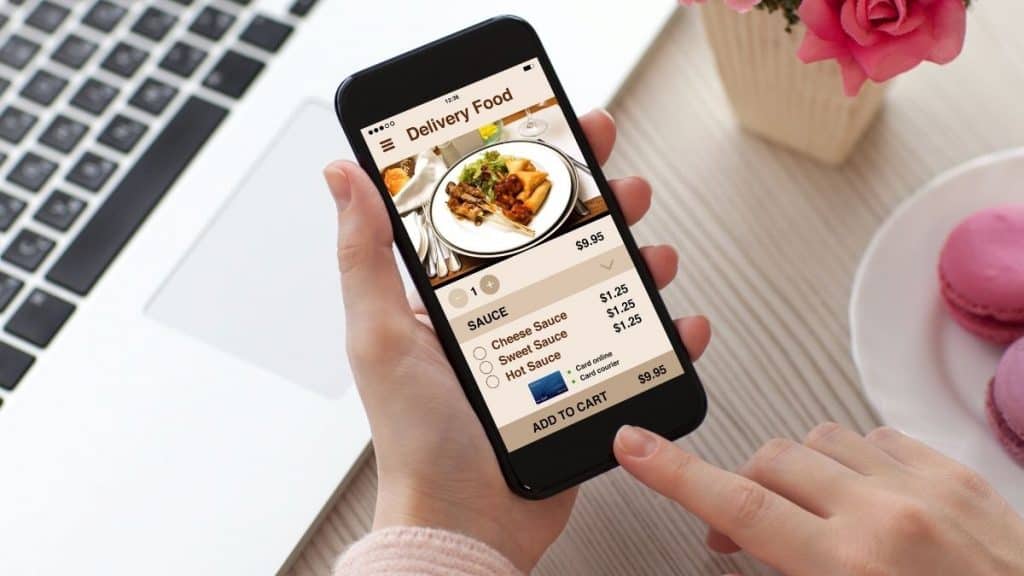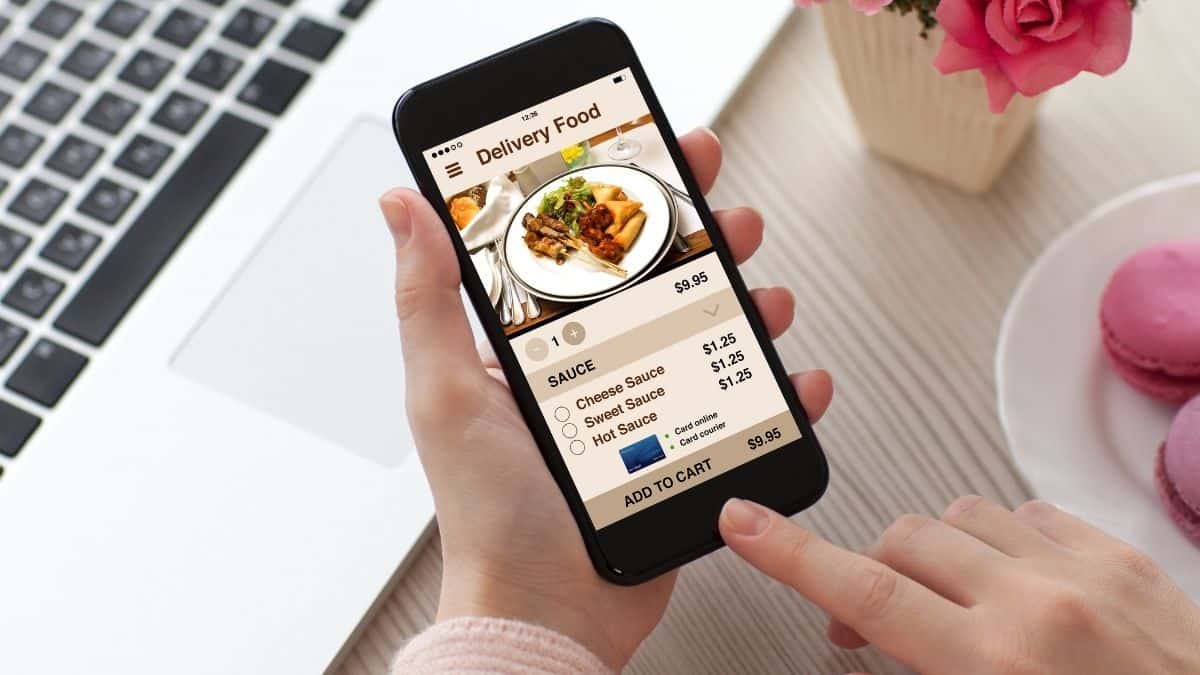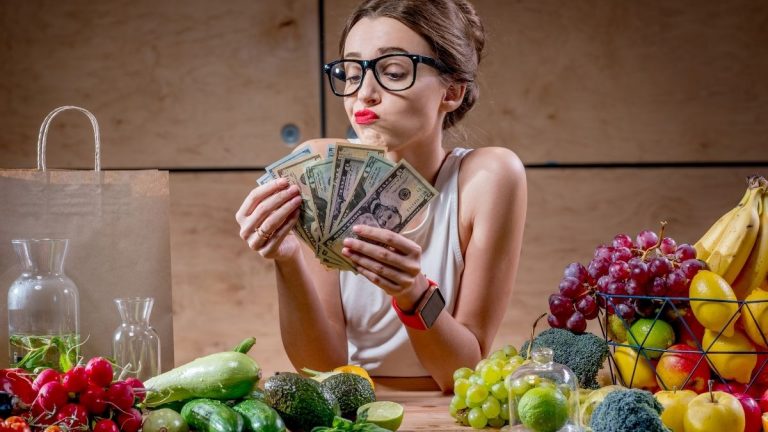Are Food Delivery Apps Profitable?

With every hardship, a bundle of opportunities opens up. The New Normal of the Covid pandemic might have hit many markets, but there are a few which have reaped benefits like never before. Are food delivery apps one of them?
Food delivery apps are one of the most burgeoning industries in the world at present as it proves to be both profitable for delivery companies and convenient for customers. According to reports, market revenue from food delivery in the US has increased 204% in the last five years, i.e., from $8.7 billion in 2015 to $26.5 billion in 2020.
Living in the New Normal, days of dine-outs are gone, and yummy food in brown parcels are in vogue. On weekends people choose to stay at home, order food and binge-watch. And quite naturally, food delivery apps are trending. We have multiple food apps installed on our phones. The market is there, the competition is on, the stakes are high. Here’s all you need to know about how food apps make money and how can they be made more profitable.
What are food delivery apps?
Food delivery apps are applications that are used to order or courier food items from restaurants or other foodservice centres to your house or any other address convenient to the customer. These applications run on both smartphones and computers that are connected to a network.
Food delivery apps can either be third-party apps or independent apps exclusive to individual companies. Third-party apps act as the connecting link between restaurants, transportation services, and customers. Uber Eats, DashDoor, Swiggy, Zomato, Foodpanda et al are some of the leading third-party services. Companies like Domino’s and KFC, on the other hand, have their own independent delivery services.
How does a food delivery app work?
Food delivery apps function through a connected network service which consists of app service providers, restaurants, and transportation service providers. What happens when you order via a food delivery app is explained as follows:
1. Surfing the List
When customers sign into their accounts in a food delivery app, they can see a list of restaurants and food items available. The site will also show you the best offers and deals of the hour. Each restaurant will have their own detailed menu. The users can either browse for a particular restaurant or for a specific food item. Suppose you need white sauce pasta, the app will come up with the names of all restaurants in town ready to satiate your palate.
2. Placing the Order
Once you have finalized the food item from a restaurant you can place the order. This will take you to a window for payment options. Usually most apps have multiple payment options such as card payment, online banking, UPI payment and cash-on-delivery. Once this is done, you enter the details of your delivery addresses: this can either be saved addresses or a new location in which case you have to enter details.
3. Confirmation and Preparation
When you place the order in an app, the restaurant gets notified of this, and they will send you a confirmation message about the availability. You will also be notified of an estimated time for delivery, which includes both the time for preparing the food and the time for transportation of food to your location.
4. Delivering the Order
Once the food is prepared and packed, the delivery agent picks it up from the restaurant and delivers it your location with the help of GPS technology. You can also track the ride details of the delivery agent using this technology. Most food delivery services either have their own chain of delivery agents or a contract with transportation service providers. On these apps, you can also update the rider about changes in location details and can also raise any concerns/issues about delivery.
5. Reception and Feedback
To ensure that you are provided with the best quality food delivered in the most timely and convenient manner, the apps give you with the option to rate the quality of the restaurant, the food item, and the delivery. After receiving the food, you can rate the service and raise your concerns and issues if you have any.
How do food delivery apps make profit?

Food delivery apps make profit through a number of ways such as commissions, subscriptions, advertisements, rush hour charges, promotional deals etc. Let us look in detail at their different sources of profit.
Advertisements
As food delivery apps are the best platforms in which a restaurant can not only advertise its products but can instantly sell them, restaurants are willing to pay handsome money for ads in these apps. The ads can be either online (appearing on the site) or offline (appearing on the food parcels).
Food delivery apps can also generate additional revenue by running exclusive advertising campaigns for a particular brand or product. These apps can make advertising deals not just with the restaurants in town but also with other major companies and brands.
Commissions
Food delivery apps, especially third-party apps, generate revenue through charging commission fee on every order placed. These commissions can be charged from the restaurant, the customer or from both the parties. The commission rate can vary from 15 to 25 percent.
Subscriptions
Apart from generating money through commission per deals, these apps can generate money through encouraging customers to take up subscription packages. Common subscription packages include discount on deals, waiving off travel fee, faster delivery etc.
Currently, there is also a subscription-based food delivery service. In this scheme, the customer can pay a specific monthly amount, and can receive their orders regularly on time without having to order every single time.
Promotional Deals
In addition to receiving money from advertisements, food delivery apps can create profit by making promotional deals with particular restaurants. In such deals, the site will promote the restaurant by having its product displayed at the top of search results or on the home page of the app.
This is also known as priority-fee collection. Business giants like Domino’s make such deals with most of the apps to increase their visibility in new markets.
Smart Payment Fees
Food delivery apps have multiple payment options and customers generally prefer the most convenient payment option. Apps can make profit by getting into deals with online payment services and can get commission from the service charges of online transactions.
Extra Charges on Rush Hours
During rush hours, that is, when there is an unusually large traffic of orders at specific times like lunch, dinner, or festival celebrations, the food delivery apps charge extra shipping costs or commission fee. Since it is also generally the time when the customers are willing to pay higher amount, this is always a profitable time for apps.
Similarly, when the weather conditions are rough or when the road traffic is higher than usual, apps may charge additional shipping fees.
How to start a food delivery service yourself?
You can start a food delivery app yourself by creating an application with the assistance of companies providing such technological services. For a start-up, you should start by making networks with the restaurants in town by offering them attractive deals. You can then promote your service on platforms like social media by advertising special offers and discounts.
Interestingly, it is very beneficial for companies to have their own independent delivery service apps. This is so because it avoids commission and other charges involved in using third-party apps. Statistics prove this. While Uber Eats and DashDoor increased its market share in the last year, the company to reap maximum profit was Domino’s which has its down delivery service.
Tips to increase profit from a food delivery app
We have already seen that food service is currently a highly competitive field and to succeed the competition, we got to know a few tips about increasing profit from your app.
➥ Attractive Discounts and Offers
With so many food delivery apps available on one smartphone, the customers will usually buy from an app that gives the maximum discount or the best offer.
If an app continues to provide attractive offers, the customer prefers to buy from there on a continuous basis and might still use the app even after the offer has expired.
➥ Discounts in Third-Party Payments
Apart from the discounts offered by the app itself, the attention of customers can be bought through discounts in third-party payment options. That is, if you prefer a particular payment gateway or bank service, you will get a discount. This way, the app owners can generate money from the ir deals with the payment companies as well.
➥ Push Notifications
An app service provider has to constantly win the attention of the customers through push notifications. Although such pop-up notifications or email ads should not be over-used to annoy the customer, a catchy notification at the right time means a sure order.
➥ Attractive Design of the App
One thing that easily gets us glued to an app service is its design. We have to be very prudent in designing the appearance of the app – it should be colourful, convenient, and easy-to-use.
All information should not be displayed on a single screen; instead, the most relevant information should be shown, with links for additional information. Catchy pictures of food items is also a must.
➥ Information and Instructions
When you see the name of a food item you haven’t heard before but like to experiment with, the first thing you wonder is about the ingredients used and the method of preparation. Having such detailed information is always handy and it attracts the customers.
Similarly, it is common that customers would like to give additional instructions on how the food should be prepared. When the customers feels that the food is customer-oriented, it can push them to place the order.
➥ Dynamic Pricing Algorithm
This strategy can be used to determine which times of the day could be notified as rush hours and then have fluctuating charges/prices during these time slots. Similarly, you can plan such dynamic pricing in accordance with festive period, special occasions etc.
➥ Know Your Target Audience
The taste preferences of people vary according to regional differences. Therefore, to succeed in the long run, the food delivery apps have to include both local and global food items.
If the app developers can focus on cultural and linguistic differences by including the names of the dishes in their local names as well, it can attract more customers.
➥ Specialized Food Services
As most of the apps have almost the same list of restaurants in town, the customers can select a restaurant using any app, they will prefer the ones with discounts. But if an app specializes on a particular kind of product – say, pizza or biriyani – there is high chance that the app can outperform others in getting customers.
➥ Uncharted Territories in Food Service
The best deal in food delivery is to find a market that is new and rising in demand. For instance, “country-style food”, “homemade food” or “office hours food” are new ways of identifying your new markets.
New, Innovative Ideas in Food Service
Food delivery business is certainly marking new heights, but as the competition is getting high, one has to go for new, innovative ideas to make it big in the field. Some innovative ideas that food delivery apps could try out are:
- Pet Food Delivery: With the Covid Pandemic and the New Normal, there is a considerable growth in the number of people who have one or more pets at home. But getting quality foods for these pets is a hurdle. An app that focus on food needs of pets becomes handy here.
- Kids’ Meals: The food requirements of children are very different from that of adults. As majority of food delivery apps focus on adults, a food service that specializes in kids’ meal is profitable venture.
- Office-Hours-Food: As it is quite common that most people do not prefer to have regular kind of meal plans during rushed working hours, an app that specialize in delivering food items that can be consumed without time-wastage will attract many people.
Conclusion
Food delivery apps are certainly a profit-making, burgeoning industry with a bright future as people are increasingly attracted to the idea of staying at home and ordering food from multiple fancy restaurants at one go. But as the competition is only getting higher, one has to come up with attractive plans and innovative strategies to stay ahead in the race.


